
Yesterday was World Oceans Day, and in recognition of this day in which we are supposed to "celebrate and honour the body of water which links us all, for what it provides humans and what it represents", the International Coastal Cleanup Singapore (ICCS) team conducted cleanups of 2 stretches of coastline. I had signed up for Tanah Merah Site 7, the same place I had volunteered for earlier in April as part of a series of year-round coastal cleanup efforts. I have visited this shore infrequently every year, and it really is gratifying to see how the efforts of small groups of individuals have truly helped make a difference in reducing the amount of trash accumulating here.
Things got off to an ominous start, with the commencement of the cleanup being delayed due to rain, but at least we weren't out in the open, unlike the previous time, when the rain had brought the session to a premature end for many participants.

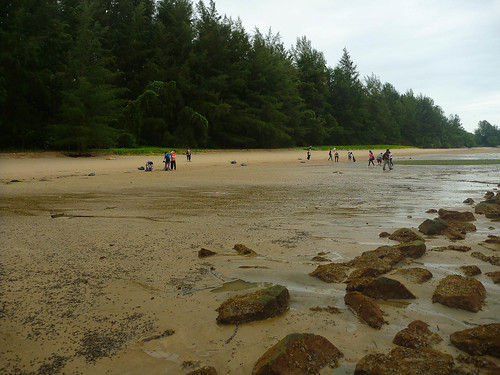
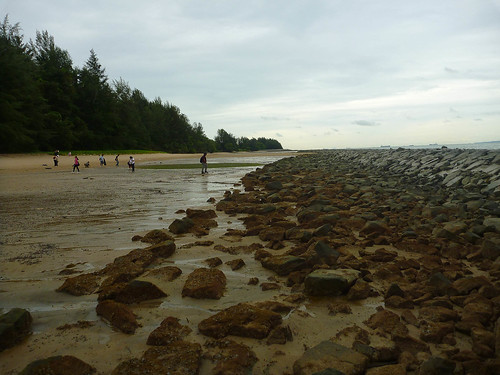
The tide was really low this morning.
I documented some of the trash that I encountered. It's difficult to trace the sources of the rubbish that washes up on this shore; some of it certainly comes from other countries, although whether it drifted all the way from Johor or the Riau Islands or was simply tossed overboard by passing vessels is unknown. A large proportion of the garbage, however, is probably domestic in origin.
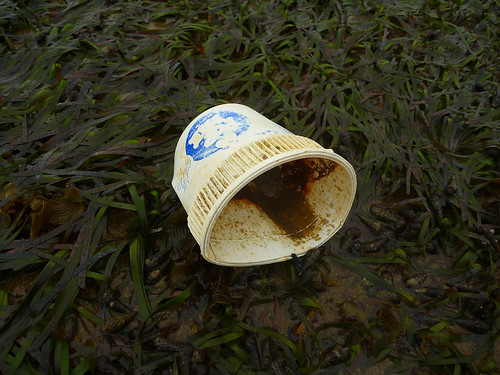
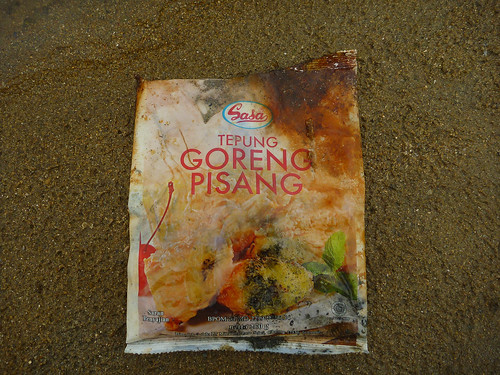
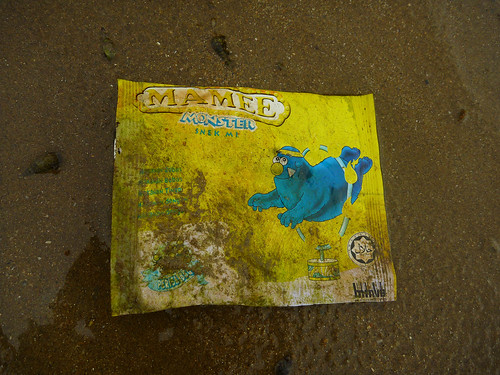
Besides assorted straws, food wrappers and containers, plastic bags, styrofoam pieces, and other assorted items, we also removed quite a number of large and bulky items.
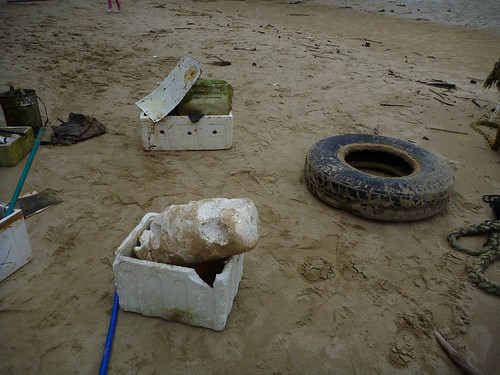

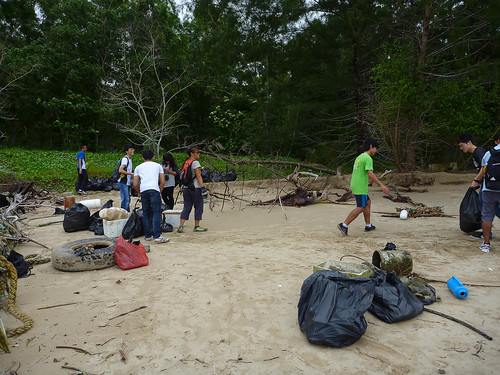
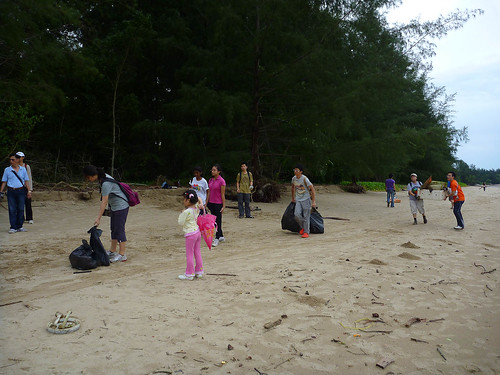
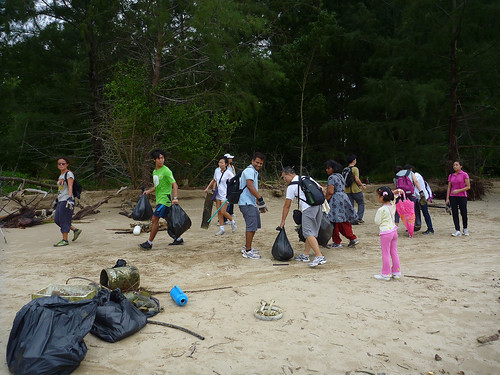


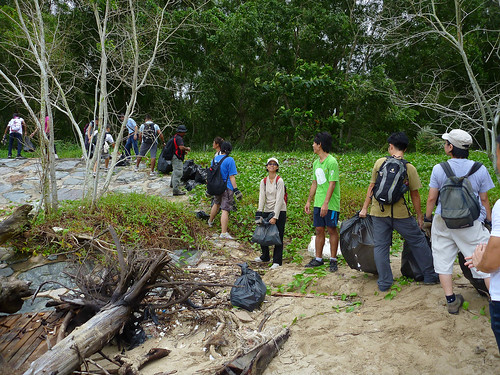
A human chain was formed to transfer the bags, laden with trash, from the beach up to the trash collection point.
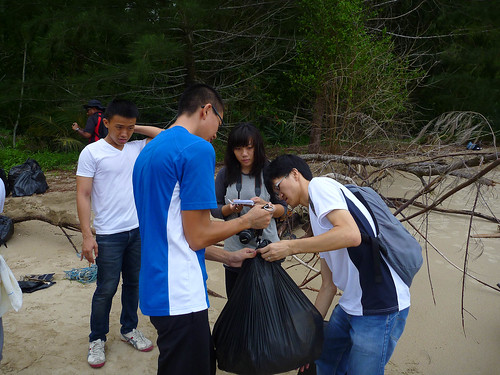

At the end of every cleanup session, another important task is to find out just how much rubbish we have collected. Here's Gladys, the Deputy Zone Captain for Tanah Merah, doing the calculations, while fellow volunteers David and Toby carry out the weighing.
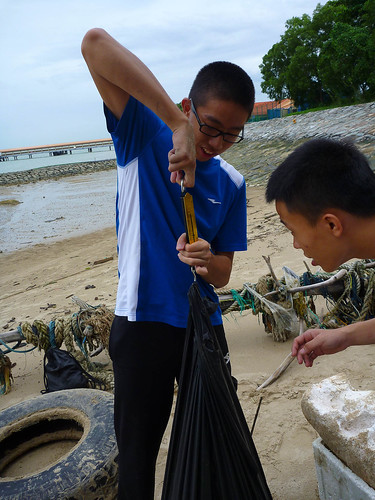
It's certainly not an easy job.
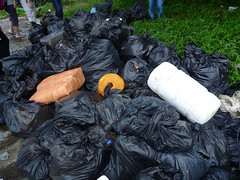
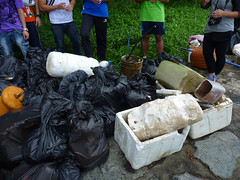
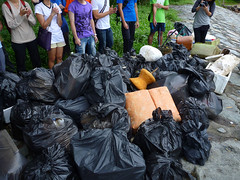
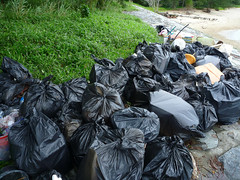
We removed a total of 343 kilograms of trash from the shores in a single morning, not counting the really bulky items that could not be weighed. Well done everyone!
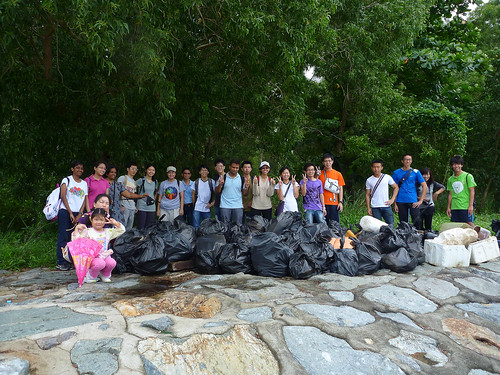
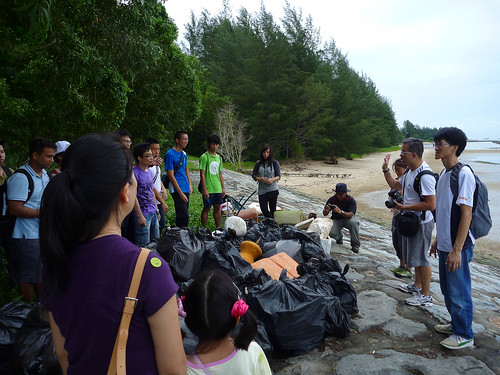
Benjamin, the Zone Captain for Tanah Merah, gives a quick debrief.
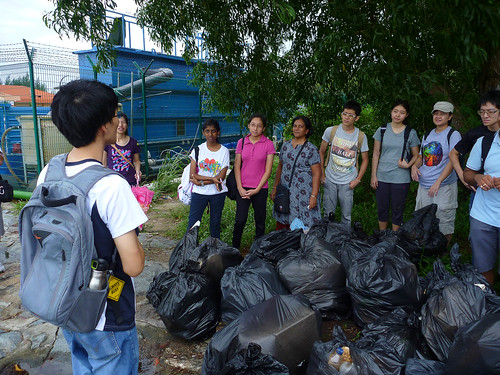
Most of the volunteers who participated had signed up via SG Cares, and David, one of the assigned Volunteer Leaders, also says a few words. Gladys' parting words are a simple yet memorable exhortation, "Don't use straws!"
Hopefully, some of the other volunteers will be motivated to help out in future cleanup activities, and will be able to understand just how their daily habits can influence the amount of trash being generated. Even better, perhaps some of them may end up influencing the people around them to participate in similar efforts, and to adopt practices to reduce their waste output.
What I like about Tanah Merah is that it's so easy to see signs of marine life, even while you're picking up trash. True, many of the larger creatures have gone into hiding during the daylight hours, but there is still so much readily apparent even to the casual observer.
While we were absorbed with the task of removing whatever trash we could find, I heard the calls of brahminy kite (Haliastur indus), collared kingfisher (Todiramphus chloris), and black-naped oriole (Oriolus chinensis). At one point in time, a striated heron (Butorides striatus) flew low above the seagrass patch, although it probably did not dare to linger for long.

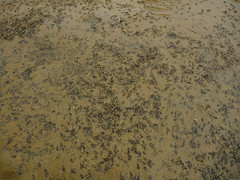

The zoned horn snails (Batillaria zonalis) are everywhere on this shore, with dense aggregations forming in some areas.

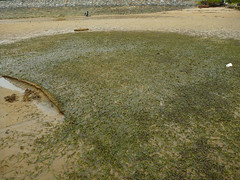
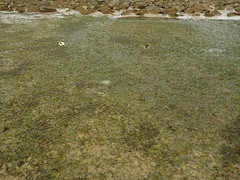
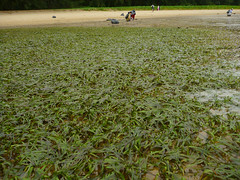
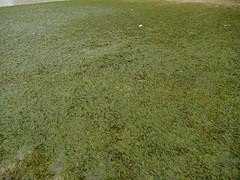
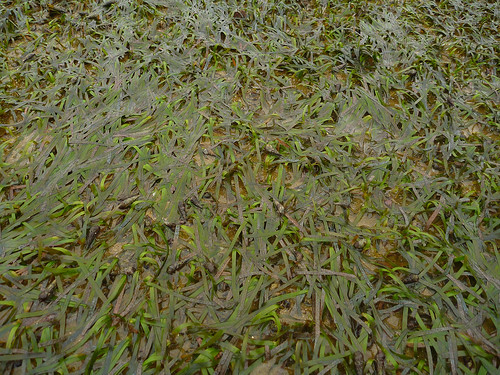
The patches of smooth ribbon seagrass (Cymodocea rotundata) were still growing well.
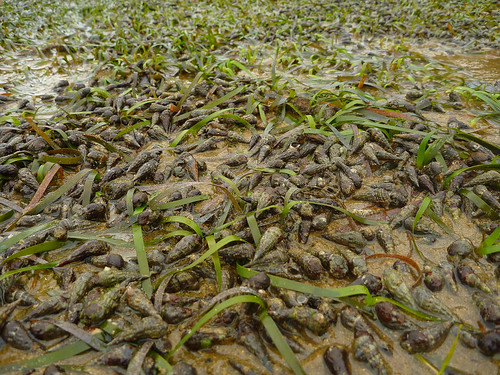
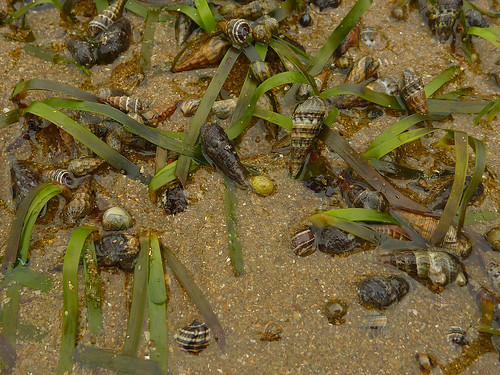
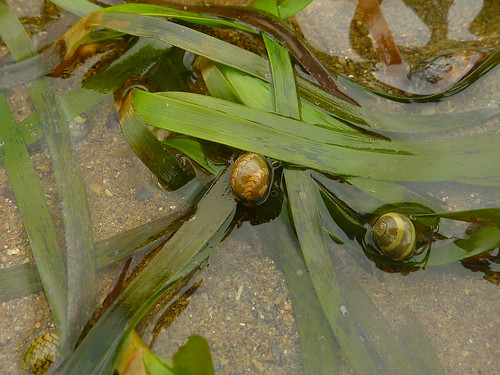
Besides zoned horn snails, the seagrass also harbours large numbers of dubious nerite (Clithon oualaniensis).
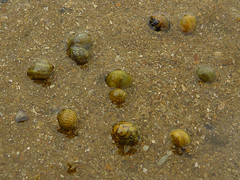
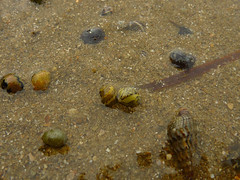
These tiny snails are found predominantly in and around the seagrass. Each shell has its own unique colours and patterns.

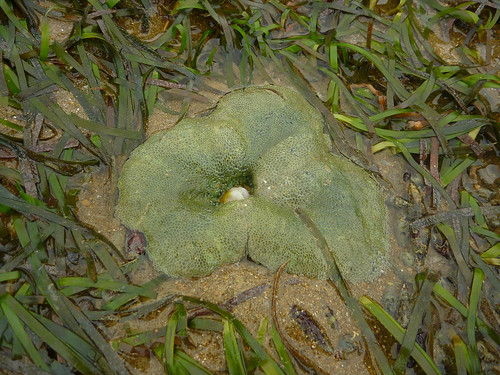
I found a couple of Haddon's carpet anemone (Stichodactyla haddoni) in one of the seagrass patches.
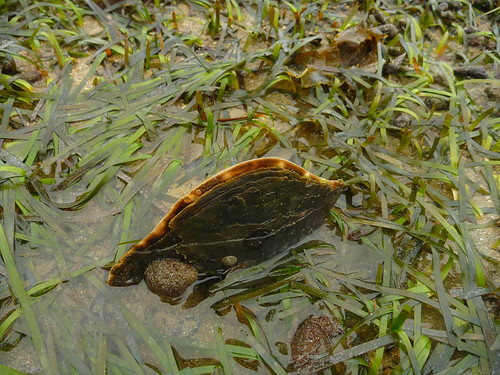
As well as a large fan clam (F. Pinnidae)
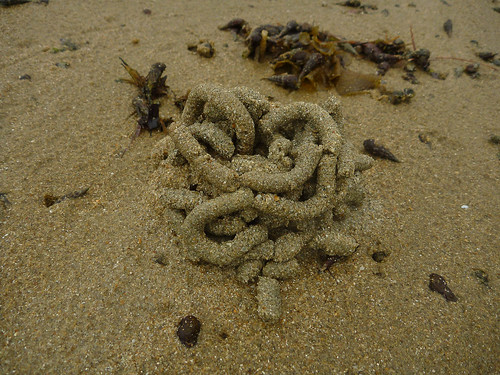
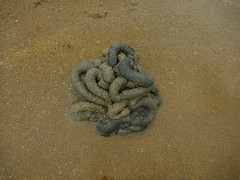
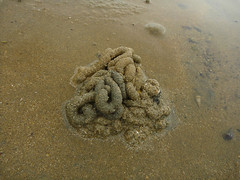
Further away from the seagrass, on the sand itself, were numerous casts deposited by acorn worms (Enteropneusta)
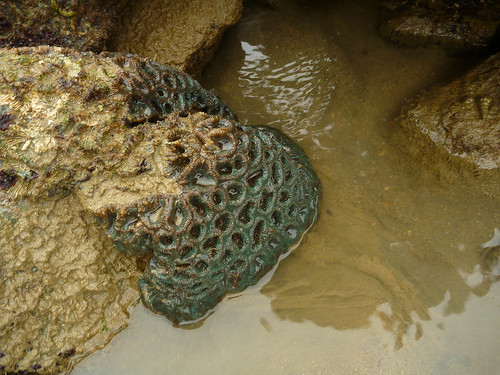
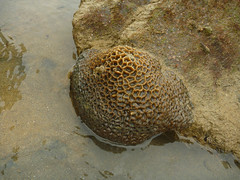
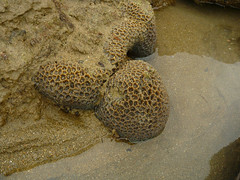


Walking along the rocks that made up the base of the seawall, we managed to find a few hard corals (Scleractinia), which all looked relatively alright. No sign of bleaching today. Yesterday morning, a small team tried to explore the coral reef that had formed on the outside of the seawall.

I'm not sure if this is the first we've ever documented a clam growing in the coral here on Tanah Merah; these tend to be more typical of reefs on our southern shores.
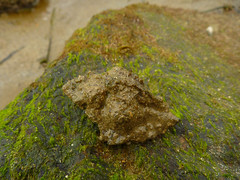
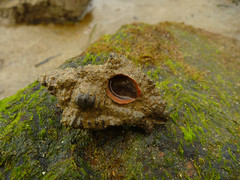
The firebrand murex (Chicoreus torrefactus) is a predatory snail that is usually very well-concealed until it moves.

This is the egg case of another carnivorous marine snail, the spiral melongena (Pugilina cochlidium).
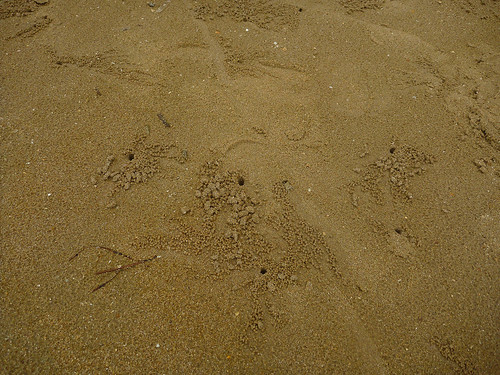
As usual, the high shore was where the sand bubbler crabs (Scopimera spp.) skittered and scuttled about, darting into their burrows at the slightest trace of a shadow. I also saw a stone crab (Myomenippe hardwickii) hiding beneath a rock near the seawall, but it retreated into a crevice before I could get close enough to take photos.
The tide was extremely low, and much of the water had drained out, leaving most of the shore exposed. Andy called me over and for a while, I thought he'd found one of the signature denizens of this shore, the hollow-cheeked stonefish (Synanecia horrida).
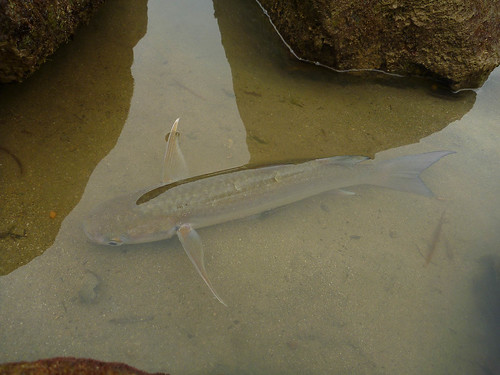
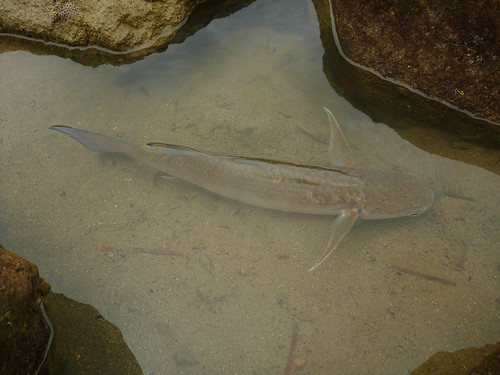
Turns out that it was a mullet (F. Mugilidae), stranded in a pool of water due to the receding of the tide. It was a large fish, at least 30 centimetres in length.
Further down, we found a few other medium-sized fish, all between 10 to 20 centimetres in length, that had also foolishly lingered behind the seawall.

A spotted scat (Scatophagus argus).


A couple of visibly stressed rabbitfish (Siganus sp.) Because fishes, when frightened and stressed, often adopt coloration very different from how they usually, I'm not sure if I should conclusively identify these as orange-spotted rabbitfish (Siganus guttatus).
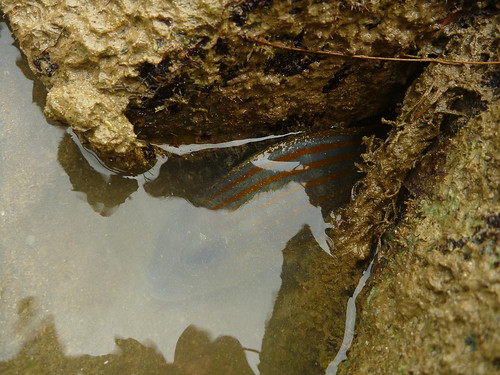
This is a fish I haven't seen before; I believe it might be a Spanish flag snapper (Lutjanus carponotatus).
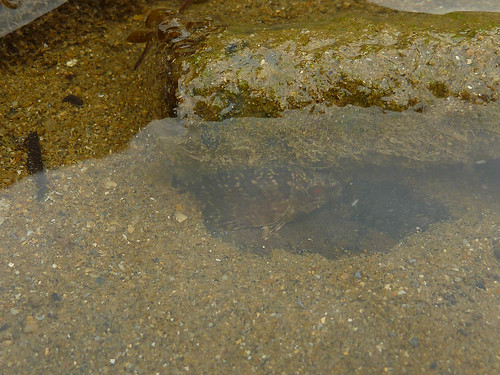
There were also large schools of very young White-spotted rabbitfish (Siganus canaliculatus), swimming about in the small pools of water that remained. When startled, they would scatter in a blind panic, with many inadvertently beaching themselves.
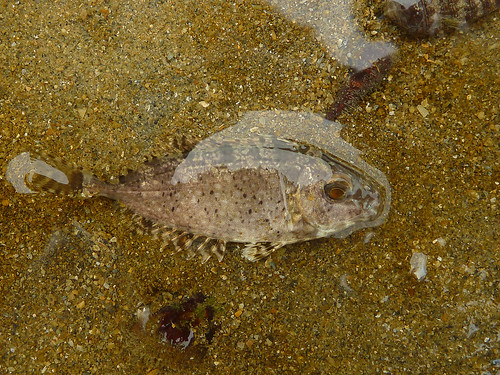
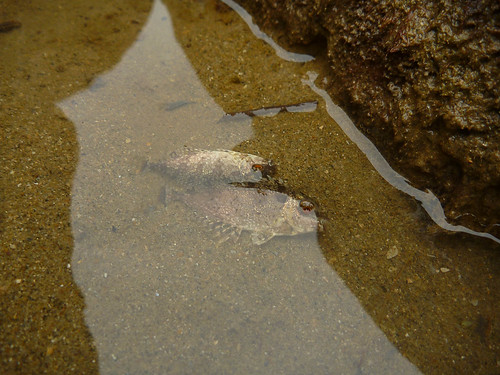
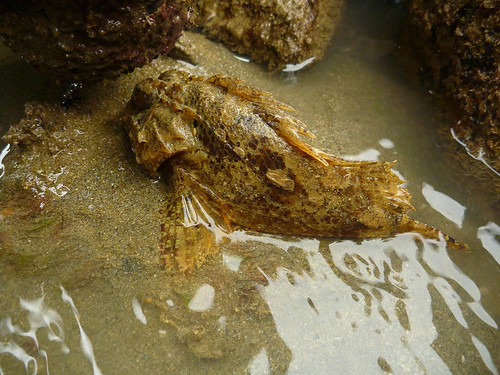
We didn't find any stonefish (on a shore where friends like Ria typically encounter one on every visit), but we did come across another fish that was not to be handled, the painted scorpionfish (Parascorpaena picta).

Unlike the other fishes, this one seemed perfectly nonchalant and nonplussed about its predicament. Presumably, scorpionfish are capable of surviving out of the water for some time.
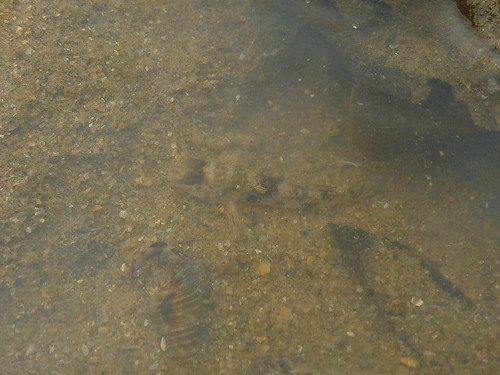
Some of the tiny fishes, like this shadow goby (Acentrogobius nebulosus) also didn't seem too worried at being stranded in small pools of water. Among the other small fishes I saw included ornate lagoon gobies (Istigobius ornatus) and dragonets (Callionymus sp.)

I found these empty bits of crab shell, which either belong to a stone crab or to a related species.
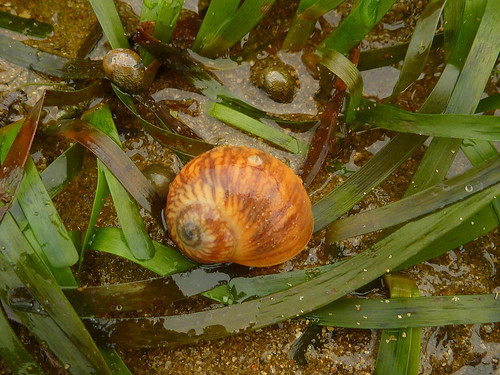
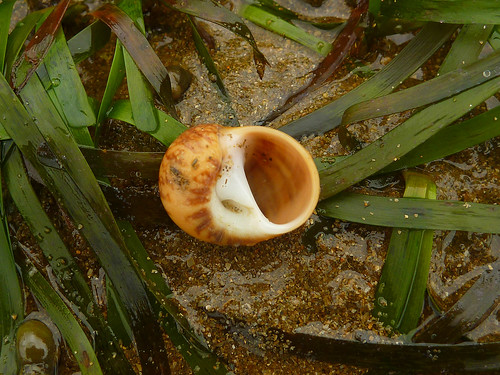
I didn't see any moon snails (F. Naticidae), although we did encounter a few empty shells. This one is a pink moon snail (Natica zonalis).
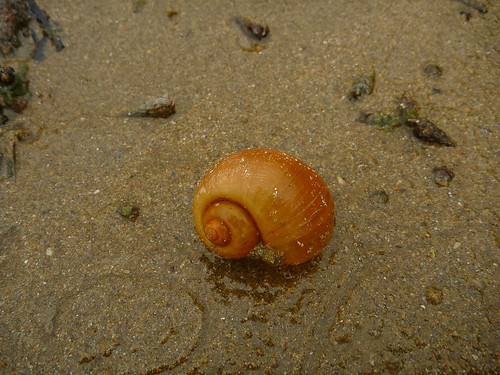
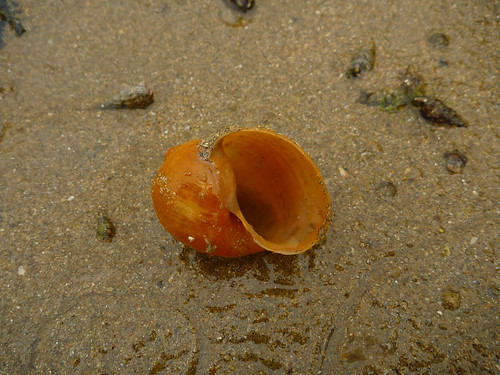
This other empty shell was very interesting; it's from a channelled apple snail (Pomacea canaliculata), a non-native species that has colonised many ponds, canals, reservoirs, and other freshwater habitats throughout Singapore. What is the shell of a freshwater snail doing in an intertidal habitat? Did the shell of the already-dead snail get washed into the sea via a canal and drifted here, to be deposited by the action of the waves? Was the shell picked up by a bird, which flew for some distance, then dropped? Was the live snail "released" by people, only to die because it was set free in the wrong environment? So many questions can be asked just based on a single snail shell.
The other volunteers found other animal remains that were a fair bit larger.
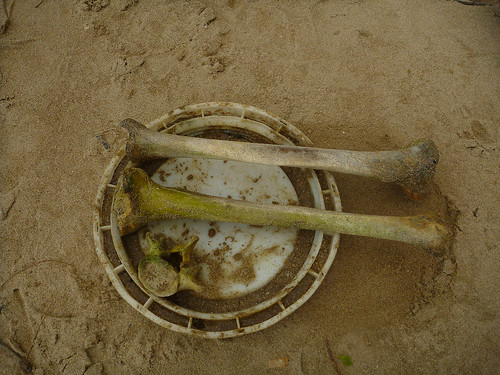

For more than half a year, the lower jaw of a wild boar (Sus scrofa vittata) had been a fixture on this shore. Today, however, it was nowhere to be seen; maybe some random visitor or angler had brought it home as a souvenir. Do these limb bones and vertebrae represent the rest of the animal? Or do they belong to another species?
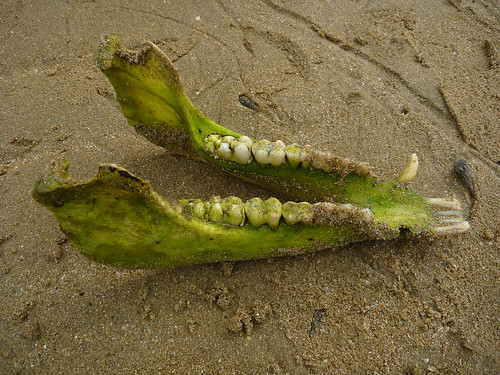
The wild boar mandible, as seen during the last cleanup session in April.

After we had finished transporting the trash bags to the collection point, I spent a moment at the edge of the coastal scrub, which comprised mostly of casuarina (Casuarina equisetifolia) and acacia (Acacia auriculiformis).
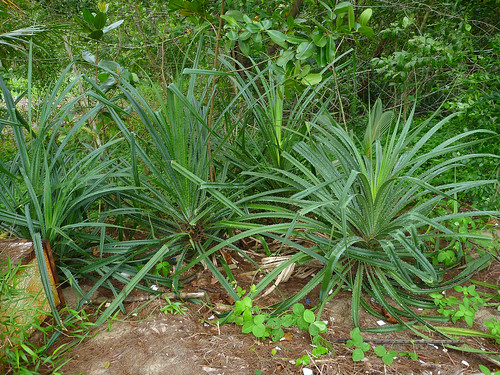
I also found a stand of what I believe might be seashore pandan (Pandanus tectorius). We've seen these in similar habitats on Pulau Semakau. I hope to see these ones at Tanah Merah fruiting someday.
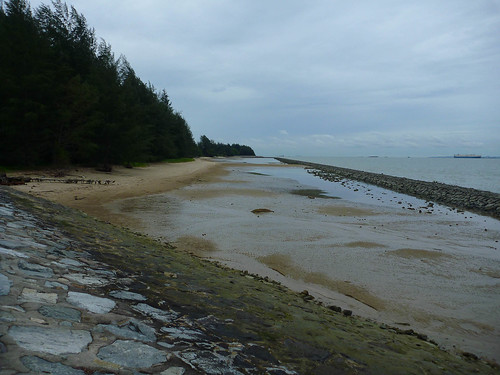
We finally departed as the tide returned, flooding the lagoon, and bringing salvation to the fishes that had been stranded behind the seawall. With the water however, comes a new batch of trash. One may question the futility of our endeavours, whether it really makes any difference, since there is still so much garbage entering and floating about in our oceans. Why wring our hands over plastic bags and styrofoam boxes when the next oil spill could devastate this shore all over again?
I've known about this part of Tanah Merah for the last 3 years. I look back on the posts I wrote after my very first visit to this stretch of Tanah Merah, and I'm sure that most of us who regularly explore the intertidal zone will agree that Tanah Merah is a very special place, one that we would hate to see ruined by the thoughtlessness of others. But we can't just stand and watch idly, fretting about Tanah Merah 7's future yet paralysed with inaction. Through the continued efforts of small groups of people, we have seen a huge change in the amount of rubbish accumulating on the beach. If only one could see the huge piles of plastic trash that we invariably encountered during those visits, and realise just how much impact these cleanup sessions have made on this shore.
As someone says in an upcoming movie, "Big things have small beginnings."